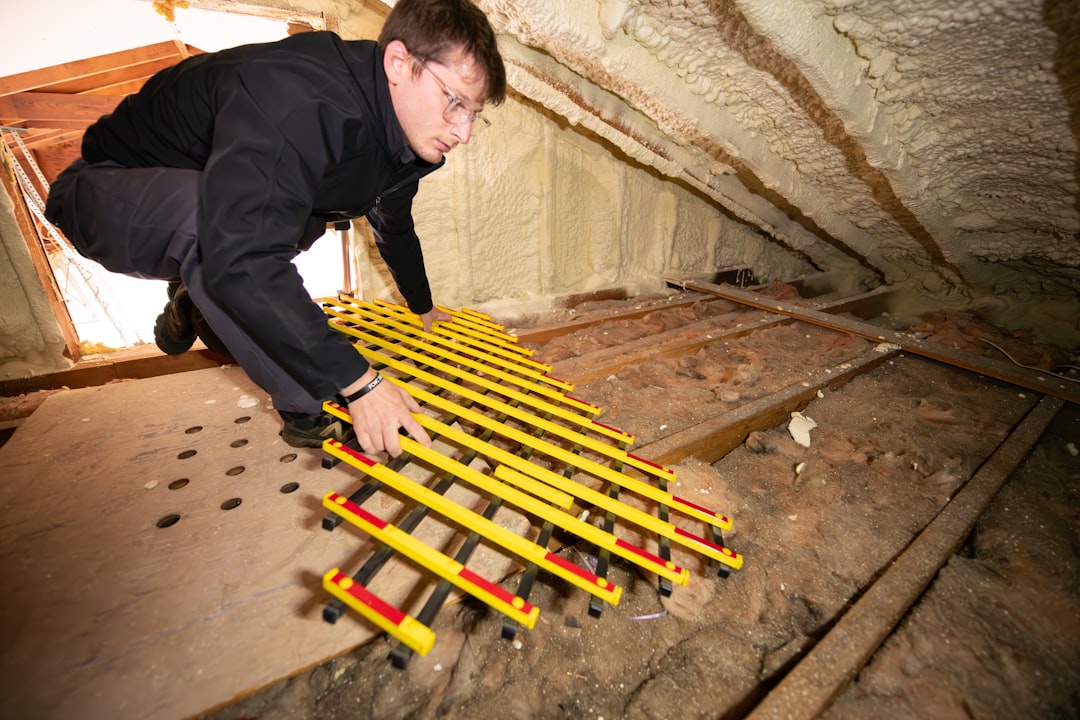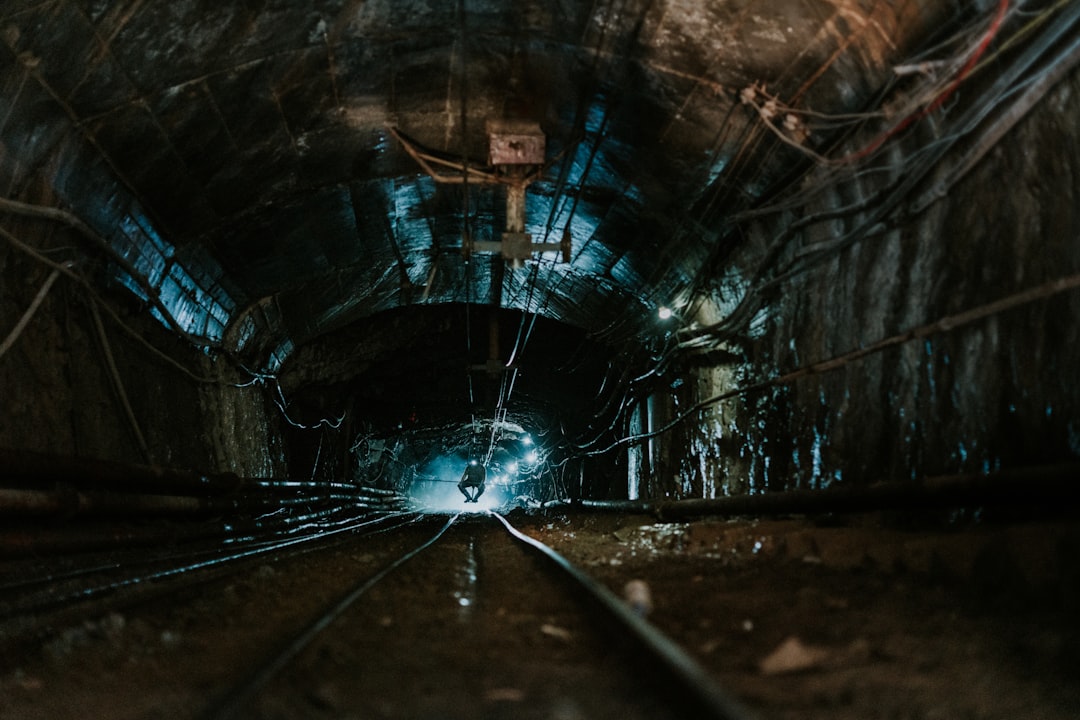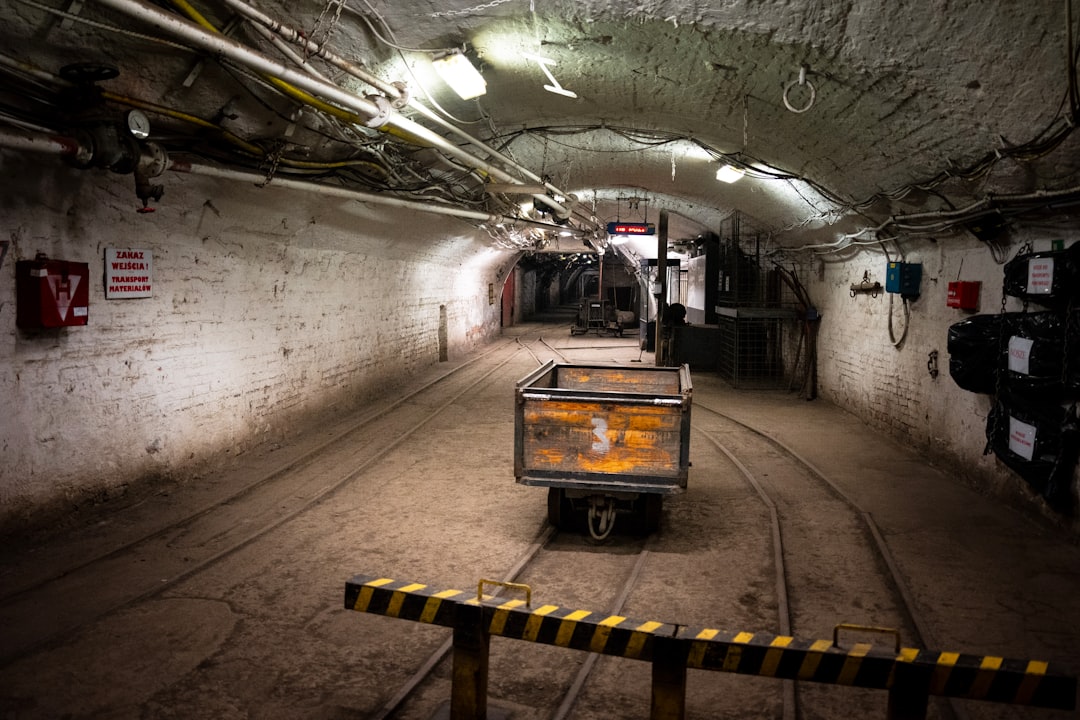

Engage prospects with a scan and streamline customer engagement with FREE QR code marketing tools by Sona – no strings attached!
Create a Free QR CodeFree consultation

No commitment

Engage prospects with a scan and streamline customer engagement with FREE QR code marketing tools by Sona – no strings attached!
Create a Free QR CodeFree consultation

No commitment
QR codes are essential tools for underground repair services, seamlessly connecting physical site work with digital accessibility. Underground utility repair, trenchless repair, cable repair services, and other infrastructure maintenance providers often struggle with missed high-value job opportunities, gaps in compliance documentation, and slow emergency response, all rooted in disconnected, paper-based workflows and limited onsite engagement insights. These challenges drive up costs and regulatory risk, while frustrating field staff who are trying to provide safe and efficient service under time and environmental pressure. For broader context on effective implementations, see this QR marketing guide.
By simplifying complex workflows, QR codes allow field staff, clients, and inspectors to access real-time maps, report emergencies via QR forms, or retrieve service documentation from their smartphones. There are no app downloads or manual searches required. Instead of leaving valuable service engagements untracked or relying on incomplete account data, modern QR code strategies let underground repair businesses automatically capture engagement signals for better resource allocation and client follow-up. This reduces dropped tickets and accelerates response times when every minute counts.
With well-placed QR codes, underground repair businesses unlock efficiency and greater customer satisfaction. These codes replace outdated paperwork or static signage, creating measurable touchpoints that turn anonymous contact into actionable insight. They shed light on compliance gaps and help teams deliver a more personalized, profitable service experience. As a result, crews work faster, managers gain real-time visibility, and clients experience a smoother journey from incident to resolution with platforms like Sona QR.

Operational bottlenecks often arise when critical information is trapped in paper forms or when a field visit leaves no digital trace for follow-up. QR codes enable underground repair services to modernize both operations and customer experience by connecting on-site activity to digital systems in seconds. When emergency tickets, safety checklists, and inspection notes live behind a single scan, the gap between action in the field and visibility in the office shrinks dramatically. Explore more applications in the Sona QR use cases.
This approach improves speed, accuracy, and accountability across the full lifecycle of a job. Crews access the latest specifications and safety protocols without returning to a trailer or calling dispatch. Inspectors retrieve current permits and compliance documents without rifling through binders. Clients and residents submit accurate location data for hazards or outages. Here is how to unlock measurable benefits with a coordinated QR code program:
This method equips underground repair leaders to digitize workflows, close documentation gaps, and measure engagement in real time. As you scale, you reduce the risk of lost demo interest or missed upsell opportunities, and you build a feedback loop for continuous improvement across field operations and customer communications. For industry context, see these contractor best practices.

Underground repair professionals often rely on static maps, paper forms, and traditional signage, which can complicate urgent repairs and let compliance tasks fall through the cracks. When a cable outage or structural hazard arises, slow access to digital information can trigger delays, extra truck rolls, and regulatory risk. QR codes transform every physical asset into a gateway to real-time, actionable information. A technician can scan a code on a pedestal, vault, or valve cover to instantly access updated safety protocols, buried facility maps, or service history. This reduces ambiguity and eliminates manual data entry that is prone to errors.
Dynamic QR codes also streamline compliance by allowing you to update destinations instantly, so inspector guidance, permits, or trenchless method specifications are always current. There is no need for costly reprints or manual redistribution. Centralized tracking offers visibility into who scans what, where, and when. Underground repair firms gain the ability to attribute actions to specific teams or accounts and to identify under-engaged or high-intent leads for targeted outreach with multi-touch attribution. This closes operational blind spots, improves accountability, and ties engagement to outcomes like response time and job completion rates.
In practice, these benefits show up in moments that matter: a resident scanning a notice on a door hanger to report a sinkhole or gas odor with geo-tagged details, a subcontractor scanning a site sign to confirm utility locate statuses, or an inspector scanning a pedestal tag to see the last maintenance record. See more repair QR uses. Each scan replaces a phone call, a manual form, or a trip back to the office with instant, usable data.

Effective QR code programs are tailored to the ways field teams, clients, and partners need to access information. Choosing the right format for each use case ensures high scan value and consistent adoption in the field. Most underground repair deployments revolve around a small set of proven formats, each with clear benefits.
For asset management, compliance, and emergency workflows, dynamic web link and form codes tend to deliver the best balance of flexibility and tracking. For stakeholder communications and escalation, vCards and app downloads can reduce friction and drive adoption of internal tools. At remote sites, Wi-Fi codes help inspectors and partners get online to upload photos or close checklists without delay.
Advanced QR management platforms can generate and manage all of these formats in one place, bridging the gap between basic website analytics and meaningful field engagement signals. Dynamic capabilities let you change destinations as your workflows evolve, while still preserving attribution and historical data for analysis.
Growth in underground repair depends on making every staff, client, and public touchpoint measurable and actionable. Missed prospects and invisible intent often originate in overlooked site interactions that do not make it into your CRM. Strategic QR placements ensure that critical moments produce data and lead to the right action. The goal is to meet people where they are, whether they are a resident near a construction area, a city inspector, or a subcontractor standing at a vault.
Think beyond classic marketing assets and consider the everyday surfaces that see the most traffic. Jobsite boards, vehicle doors, equipment tags, and door hangers all become digital on-ramps that reduce friction and improve response. When each placement has a clear call to action and a dynamic destination, you can test messaging and measure performance by location, time, and audience type.
Turning practical site elements into digital signals gives repair companies deeper visibility. Over time, scan heatmaps and conversion data help you refine placements and content, revealing where to invest budgets and how to tailor messages for the highest impact.

Underground repair services can apply QR codes across the full project lifecycle, from preconstruction and permitting to emergency response and post-service care. The most effective use cases map to specific actions you want the scanner to take, such as submitting a ticket, viewing a safety guide, or confirming a permit. Each one can be measured, refined, and scaled.
Consider building a portfolio of use cases that address both operational efficiency and customer experience. This dual focus ensures that the same system that speeds up crews also captures demand and feedback from customers, residents, and partners. Below are high-impact examples aligned to common field interactions:
These use cases turn everyday materials into digital workflows that are easy to deploy and maintain. When powered by a dynamic platform, each code’s destination and analytics can evolve as your processes mature.
To prevent high-intent leads from being missed, every QR scan should serve as a digital fingerprint that captures context, intent, and timing. By deploying unique codes for specific interactions and locations, you can automatically segment scanners into meaningful audiences. This enables smarter follow-up and personalized outreach across email, SMS, and paid media.
For underground repair services, key audience distinctions often include residents versus commercial facility managers, municipal partners versus private developers, and emergency escalations versus planned maintenance. Tagging these differences at the scan helps prioritize responses and tailor communication. The goal is not only to capture demand but to direct it to the right team with the right message.
Advanced segmentation turns every scan into an actionable opportunity. It addresses the risks of lost prospects or stale account information and keeps your teams focused on the right conversations at the right time.
Measuring the impact of analog touchpoints can be difficult for underground repair marketing. QR codes solve this by linking print and field operations to digital analytics rooted in offline attribution. Once deployed across your physical and digital channels, they create a connected funnel that captures demand wherever it appears, even outside traditional web or phone interactions.
This integration is particularly valuable in a sector where many interactions happen in the field, away from desks and laptops. By tagging materials and locations with unique codes, you can attribute engagement and conversions to specific media, crews, or neighborhoods. Over time, this dataset improves targeting, messaging, and resource allocation.
QR codes act as offline onramps to your digital marketing engine. With a centralized platform like Sona QR, you manage all codes, monitor performance by channel, and sync scan data with your CRM and ad platforms to fuel retargeting and reporting.
Even the strongest QR strategy needs a repeatable execution plan. A simple, consistent checklist ensures your first deployments earn trust in the field and that subsequent iterations get better. Start with a pilot focused on one or two high-impact use cases, then expand as you learn where scans are most frequent and which destinations drive outcomes.
Treat the campaign like a product launch. Invest in design, placement testing, and training. Align every code to a single, benefit-focused call to action. Finally, connect your QR platform to analytics and CRM tools so you can prove impact, troubleshoot issues quickly, and stay agile as conditions change.
Focus on a gap you can close in weeks, not months. Common targets include slow emergency escalation, paper-heavy inspections, and untracked restoration updates. Define how the scan will help the user and what success looks like for your team.
Select static or dynamic codes based on your need for flexibility and analytics. Static codes point to fixed destinations like a standard safety PDF. Dynamic codes enable updates, campaign tagging, and advanced tracking without reprinting.
Good design improves scan rates, while testing prevents field failures. Make the code visible, instructive, and resilient. Consider lighting, distance, and environmental factors like dust and rain.
Roll out codes where they remove friction or capture valuable data. Start with a few placements you can monitor closely. Confirm each code’s purpose is clear to its audience.
Analytics turn scans into insight. Monitor what, where, and when people engage, then iterate on code placement and content. Feed scan data into your CRM so the right teams can follow up.
Start creating QR codes for free: Start creating QR codes for free
Many underground repair firms track surface-level metrics like web visits or completed forms, which leaves the path from first engagement to revenue unclear. QR codes can capture earlier interactions that often happen off-site or offline. When paired with the right tools, these data points connect to job creation, upsells, and long-term account health. An analytics practice designed for QR starts by instrumenting every code with campaign tags, then follows each scan through to the action it triggered.
This approach supports both operations and growth. Dispatch can see where emergency reports originate and how quickly crews respond. Sales can attribute consultations to event scans or direct mailers. Leadership can evaluate which placements justify further investment and which should be redesigned. With Sona QR and Sona.com, the full loop becomes visible, from QR scan to booked job and collected payment.
By treating scans as first-class touchpoints, you transform QR codes from convenience tools into performance drivers. The outcome is a data-backed understanding of what moves the needle in the field and in the funnel.
Expanding QR success requires a focus on clarity, attribution, and automation. The clearer your calls to action and the cleaner your data flows, the more value you will extract from each scan. Start by standardizing code generation and naming, then invest in training so crews and inspectors know what to expect and how to promote scanning when it helps the public.
Your next priority is automation. When scans automatically trigger alerts, emails, or dispatch tickets, you eliminate manual steps that introduce delay and risk. Over time, these automations add up to faster service, better compliance, and more revenue opportunities.
These practices resolve common issues such as lost account data, missed engagement opportunities, and legacy paperwork that slows growth. They also build trust across teams and with the public, since scanning consistently delivers value.

QR codes already power improvements across underground repair programs. The following examples showcase how small changes in placement and destination can create measurable gains in compliance, response time, and customer experience. They also illustrate creative ways to capture intent that would otherwise remain invisible.
Consider borrowing a single tactic and piloting it at one site or for one service line. Measure the impact on engagement and job outcomes, then expand gradually. This approach builds internal momentum while keeping risk low.
These examples demonstrate that QR codes do not have to be complex to be powerful. Clear calls to action, smart destinations, and strong analytics produce noticeable improvements even in the most demanding field environments.
Expert deployment hinges on reliability, clarity, and measurement. Weatherproofing is non-negotiable, as is visibility at the point where scanning is most useful. Avoid crowding codes with visual noise or burying them where glare and grime interfere. Give every code a job, and make sure the scanner knows the benefit at a glance.
Common pitfalls include reusing static codes across multiple channels, deploying without training, and neglecting analytics. Each of these mistakes reduces the ability to attribute value, to improve content, or to scale with confidence. A disciplined approach to code creation and maintenance prevents these issues.
QR codes have redefined efficiency and engagement for underground repair services, giving every physical asset or touchpoint the power to enable digital access, streamline compliance, and accelerate emergency response. When integrated into daily operations, these codes drive instant engagement from field crews, regulators, and customers, and they unify data throughout the project lifecycle. The result is a system that turns one-time scans into measurable outcomes.
With the added ability to surface critical engagement signals, avoid lost opportunities, and segment high-value accounts, advanced QR code strategies offer underground repair businesses a pathway to operational excellence, smarter targeting, and a superior client experience. Sona QR provides the infrastructure to generate, manage, and analyze your codes at scale, while Sona.com connects scans to revenue with identity resolution and attribution.
QR codes have revolutionized underground repair services by transforming complex, on-site information access into seamless, real-time interactions. Whether it’s enabling instant retrieval of repair histories, enhancing technician efficiency, or improving safety compliance, QR codes replace cumbersome manual processes with quick, mobile-friendly scans that deliver critical data exactly when it’s needed. Imagine field teams instantly accessing detailed repair records or safety protocols with a simple scan—minimizing downtime and maximizing accuracy.
With Sona QR, you can create dynamic, trackable QR codes tailored to underground repair workflows that update instantly without reprinting, ensuring every scan provides the most current information. Connect each interaction to operational insights, streamline maintenance schedules, and enhance communication between teams and clients. Start for free with Sona QR today and turn every scan into faster repairs, safer operations, and smarter service delivery.
QR codes simplify workflows, improve emergency response times, reduce paperwork, enhance compliance tracking, provide real-time access to service documentation, and increase customer satisfaction in underground repair services.
Select providers that use dynamic QR codes to offer real-time information access, track engagement analytics, ensure compliance updates, and integrate with CRM systems for better accountability and faster response.
Common methods include using web link QR codes for maps and protocols, vCards for contact sharing, form QR codes for incident reporting, Wi-Fi access codes for remote connectivity, and app download codes for tool adoption.
The article does not specify exact costs for underground repair services with QR code solutions, but implementing QR codes reduces operational costs by improving efficiency and reducing errors.
Signs include delays in emergency response, reliance on paper-based workflows, missing compliance documentation, frequent service errors, and poor communication between field crews and clients.
QR codes enable instant incident reporting with GPS and photos, reduce dropped calls, provide geo-tagged data for dispatch, and accelerate crew mobilization for faster emergency response.
Effective placements include equipment tags, jobsite signage, traffic barriers, permits, door hangers, fleet vehicles, uniforms, and direct mailers to capture scans from technicians, inspectors, clients, and the public.
Dynamic web link codes, form codes for reporting, vCards for contact sharing, Wi-Fi access codes for remote connectivity, and app download codes for onboarding are commonly used QR code formats.
By tracking scan rates, locations, scan times, user engagement, and integrating scan data with CRM and analytics platforms to monitor response times, job completion rates, and customer interactions.
Avoid reusing static codes across channels, neglecting weatherproofing, lacking team training, unclear calls to action, poor placement, and ignoring analytics for continuous improvement.
QR codes provide instant access to up-to-date permits, inspection checklists, and safety protocols, enable real-time updates without reprints, and create clear documentation trails for audits.
By placing QR codes on door notices, mailers, and invoices to provide outage updates, restoration timelines, FAQs, payment portals, and feedback forms, reducing call volumes and improving transparency.
Choose a focused use case, select the right QR code type, design and test codes for visibility and durability, deploy codes strategically, and track scan data to optimize placement and content.
They capture engagement data from every touchpoint, enable audience segmentation for targeted outreach, reduce missed leads, and provide insights to optimize marketing and operational efforts.
QR codes deliver micro-training videos, standard operating procedures, and app downloads on-site, accelerating onboarding and increasing adoption of digital tools while reducing safety incidents.
Use Sona QR's trackable codes to improve customer acquisition and engagement today.
Create Your FREE Trackable QR Code in SecondsJoin results-focused teams combining Sona Platform automation with advanced Google Ads strategies to scale lead generation

Connect your existing CRM

Free Account Enrichment

No setup fees
No commitment required

Free consultation

Get a custom Google Ads roadmap for your business






Launch campaigns that generate qualified leads in 30 days or less.
